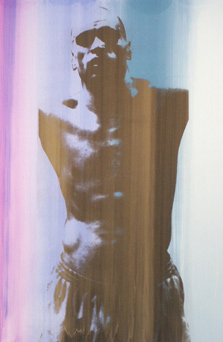Is it really Graf?

An odd but perhaps telling thing happened the other day right in the middle of art world central: 22nd Street between 10th and 11th avenues in Manhattan, New York City. After a little haggling with our mayor, Michael Bloomberg (a good mayor who took up a silly cause on this effort), the “urban” fashion designer Mark Ecko staged a block party featuring graffiti writers painting on faux subway car sides.
Bloomberg claimed this event would encourage real vandalism. But the real coooky part is that Ecko is also the man behind “Getting Up: Contents Under Pressure, ” a video game coming out this fall for PS2, Xbox and PC. An ex-writer celebrating his past? Or, just a really good marketeer cashing in on nostalgia?
Though it was great to see artists like Henry Chalfant, Daze (who participated), my man Fab 5 Freddy and members of Tats Cru, the “legalized” block party had that new school corporate feel in spades. Hey, as a curator of one of the most recent museum exhibitions on hip hop, I can relate. At least this event was aimed to bring people to 22nd Street to see art, most of whom could care less about what hangs on the walls of the many galleries that dot one of the most important streets in the “art” world.
Franklin Sirmans

top Daze this pic Lady Pink











